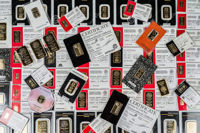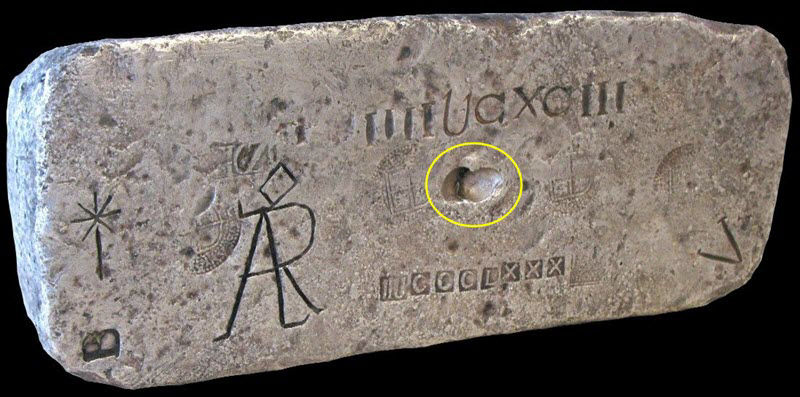Posted on June 16, 2021

By Paul Vanguard, for BullionMax.com
Nobody's going to say no to a gold or silver bar, as long as the metal's authentic. That's the problem, though, isn't it? You can't just eyeball a bullion bar, weigh it in your hand, and know for sure it's 0.999 fine gold or a gilded tungsten counterfeit.
That's where an assay comes into play.
An assay is a lab test to determine the precise content and quality of metal.
In historic times, assays were performed on a sample physically removed from a bar or ingot. Assayers actually scooped a (sometimes generous) chunk right out of the metal. If you're thinking that lowers the value of the bar, you're absolutely right.

A silver ingot recovered from the Nuestra Señora de Atocha shipwreck of 1622. The circled divot in the image above is the "assayer's bite."
With older methods such as fire, dry or wet assaying, the assayer essentially relies on weight comparison to determine the amount of precious metals against non-precious ones in the ore.
Fortunately, modern assay methods don't do this. X-ray fluorescence is very accurate, non-invasive, non-destructive and takes about three minutes. More accurate assay methods are also more intensive, and involve removing a sample of metal from the bullion for testing. (Just like the Spanish assayers who scooped the Atocha ingot, you don't get your sample back).
The result of an assay is an official certificate of purity -- basically, "this bar has 1.001 ounces of 0.999 fine gold at time of assay."
Without an assay, especially a detailed one, it's difficult to know what you're getting. Ideally, all of the bullion you own should come with some form of assay, certainly if we are talking bars. Coins may or may not have one, and we'll go into this part later
And that's why assay packaging is important.
Refiners and mints have an awful lot riding on their reputations. So many gold bullion bars (Valcambi, and the bars Valcambi produces for Credit Suisse come to mind) are placed in tamper-proof packaging along with their assay certificate before they leave the refiner.
Good Delivery requirements include basic information like refiner's name, a serial number, and metal weight and purity be stamped on the bullion bar. Refiners can assay an entire series of gold or silver all at once (before it's even poured into molds or stamped), produce an assay certificate cross-referencing the bar's serial number, and put it all together in a single protective plastic case.
Assay packaging for gold bullion is sort of like the safety seal on a bottle of ketchup. It confirms that nobody's messed with the contents of the bottle since it left the ketchup factory. Intact assay packaging provides a high level of confidence that its contents, whether it's 5 grams of gold or 10 oz of silver, are authentic.
This means you can expect higher resale value (compared to the same weight of bullion without assay packaging) and buyers can feel comfortable they're paying gold prices for a gilded tungsten slug.
One last thing: It's important to make the distinction between an assay of any kind and a certificate of authenticity, as the latter only proves that the coin and bar originated from a certain mint or collection. COAs are what's important to the coin collector, while assays are what should be a priority for any bullion holder.
Paul Vanguard is a lifelong precious metals enthusiast and a proud member of the BullionMax team.